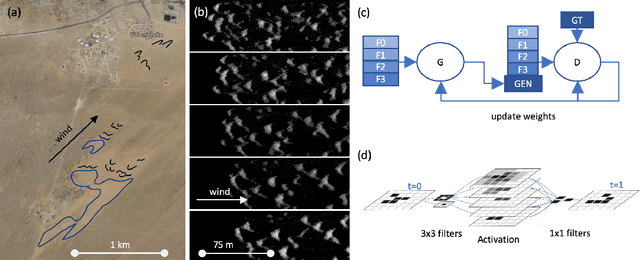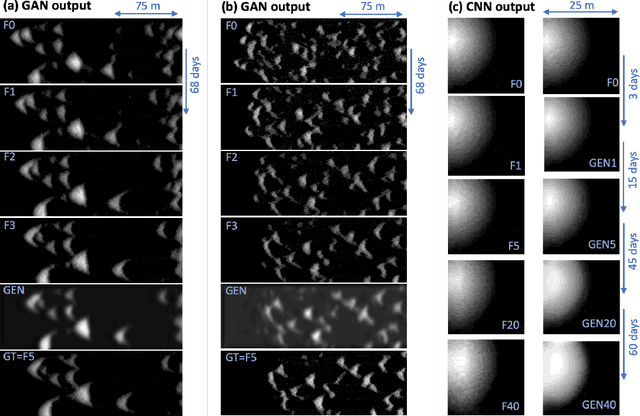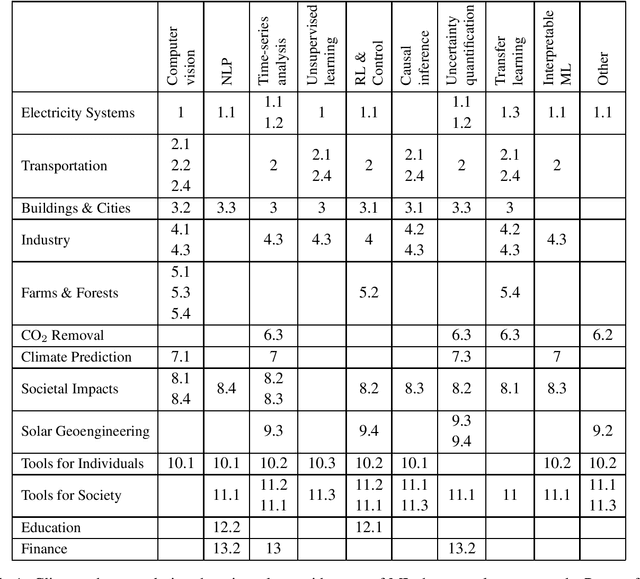Kelly Kochanski
Deep learning predictions of sand dune migration
Dec 13, 2019

Abstract:A dry decade in the Navajo Nation has killed vegetation, dessicated soils, and released once-stable sand into the wind. This sand now covers one-third of the Nation's land, threatening roads, gardens and hundreds of homes. Many arid regions have similar problems: global warming has increased dune movement across farmland in Namibia and Angola, and the southwestern US. Current dune models, unfortunately, do not scale well enough to provide useful forecasts for the $\sim$5\% of land surfaces covered by mobile sand. We test the ability of two deep learning algorithms, a GAN and a CNN, to model the motion of sand dunes. The models are trained on simulated data from community-standard cellular automaton model of sand dunes. Preliminary results show the GAN producing reasonable forward predictions of dune migration at ten million times the speed of the existing model.
Tackling Climate Change with Machine Learning
Jun 10, 2019
Abstract:Climate change is one of the greatest challenges facing humanity, and we, as machine learning experts, may wonder how we can help. Here we describe how machine learning can be a powerful tool in reducing greenhouse gas emissions and helping society adapt to a changing climate. From smart grids to disaster management, we identify high impact problems where existing gaps can be filled by machine learning, in collaboration with other fields. Our recommendations encompass exciting research questions as well as promising business opportunities. We call on the machine learning community to join the global effort against climate change.
 Add to Chrome
Add to Chrome Add to Firefox
Add to Firefox Add to Edge
Add to Edge